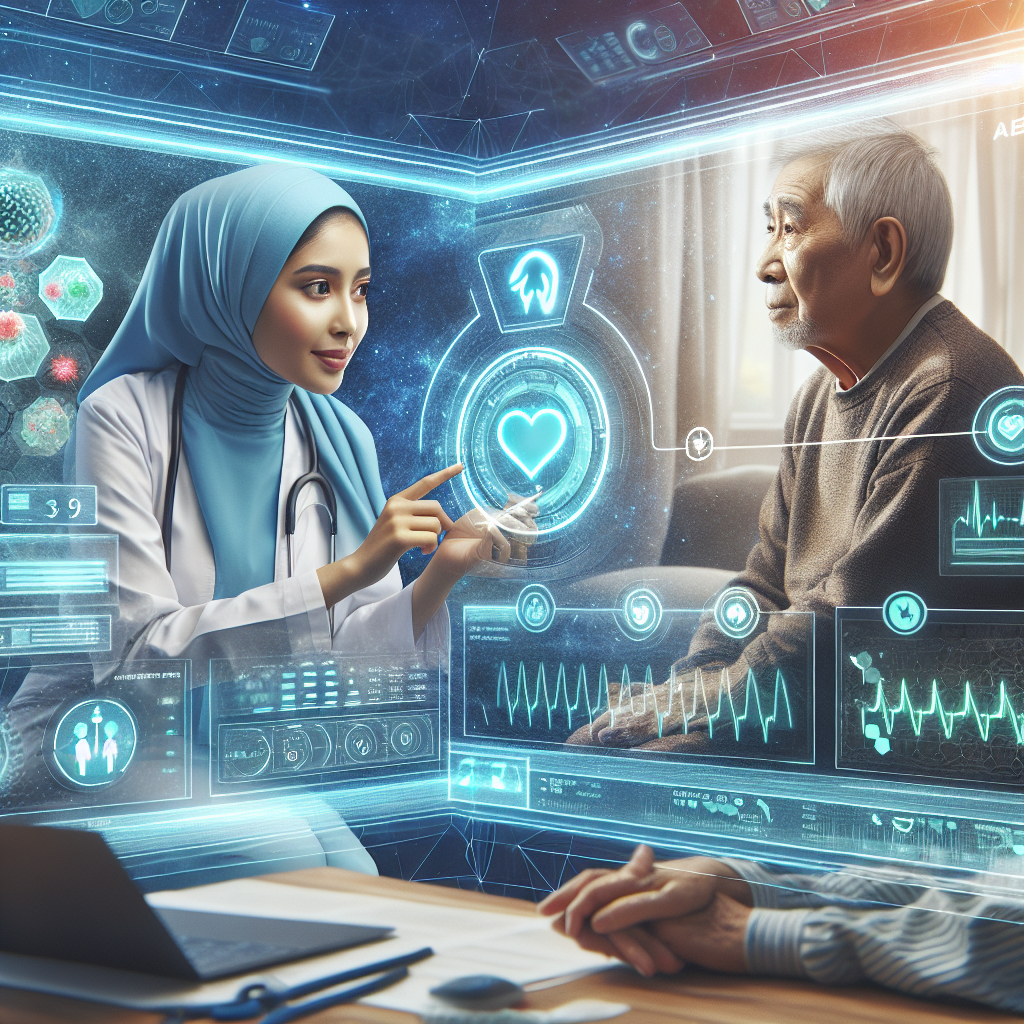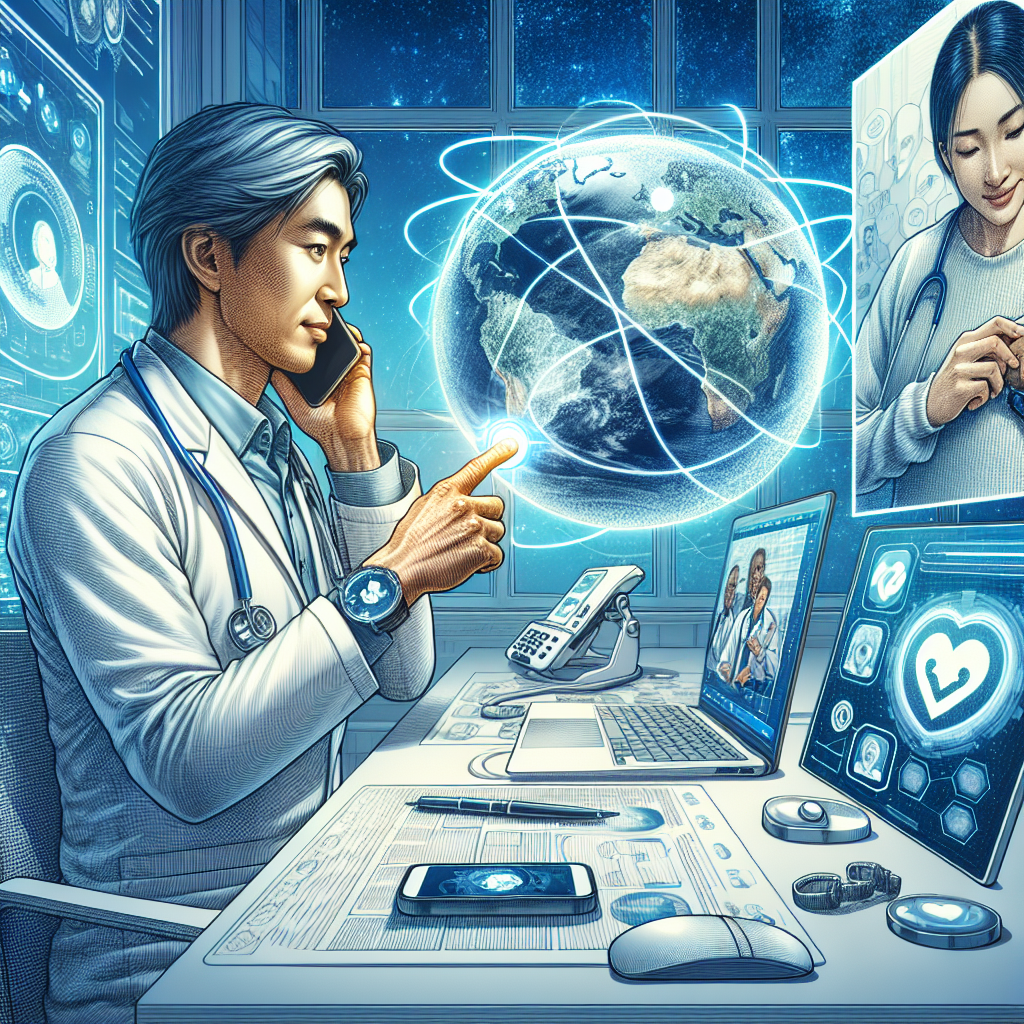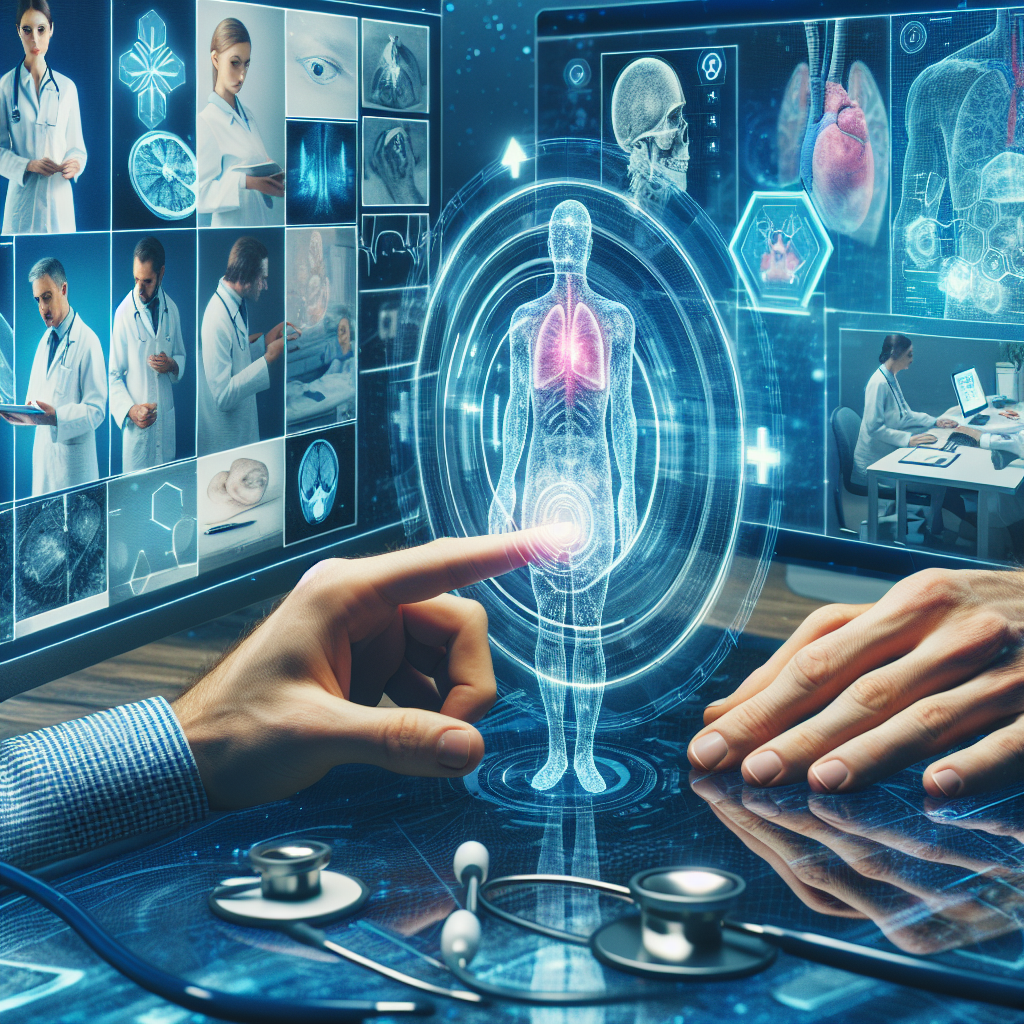Your cart is currently empty!
Tag: Telemedicine

Remote Monitoring: A Game-Changer for Healthcare and Telemedicine
In recent years, the healthcare industry has seen a significant shift towards telemedicine and remote monitoring technologies. These advancements have not only revolutionized the way healthcare is delivered but have also improved patient outcomes and reduced healthcare costs.Remote monitoring, in particular, has emerged as a game-changer for healthcare providers and patients alike. This technology allows healthcare professionals to monitor patients’ vital signs, symptoms, and health status from a distance, using devices such as wearable sensors, mobile apps, and connected medical devices.
One of the key benefits of remote monitoring is that it allows for continuous monitoring of patients, even when they are not in a healthcare facility. This is especially important for patients with chronic conditions such as diabetes, heart disease, and hypertension, who require regular monitoring and follow-up care.
Remote monitoring also enables healthcare providers to detect potential health issues early on, before they escalate into more serious problems. By tracking key metrics such as blood pressure, heart rate, and blood sugar levels in real-time, healthcare professionals can intervene quickly and adjust treatment plans as needed.
Furthermore, remote monitoring can help patients take a more proactive role in managing their health. With access to their own health data and the ability to track their progress over time, patients are more likely to adhere to their treatment plans and make healthier lifestyle choices.
In the era of telemedicine and virtual care, remote monitoring has become an essential tool for providing high-quality, personalized healthcare to patients, regardless of their location. Patients in rural or underserved areas can now access the same level of care as those in urban centers, thanks to remote monitoring technologies.
Overall, remote monitoring is transforming the healthcare landscape by improving patient outcomes, enhancing the patient experience, and reducing healthcare costs. As the technology continues to evolve and become more widely adopted, it is clear that remote monitoring is here to stay and will play a crucial role in the future of healthcare and telemedicine.

The Role of Remote Monitoring in Healthcare and Telemedicine
The Role of Remote Monitoring in Healthcare and TelemedicineRemote monitoring in healthcare and telemedicine has become increasingly important in recent years, particularly in light of the COVID-19 pandemic. With the rise of telehealth services and the need to limit in-person interactions, remote monitoring has played a crucial role in ensuring patients receive the care they need while minimizing the risk of exposure to infectious diseases.
Remote monitoring involves the use of technology to track and monitor a patient’s health status from a distance. This can include the use of wearable devices, mobile apps, and other digital tools to collect and transmit data such as vital signs, medication adherence, and symptom tracking. This data is then analyzed by healthcare providers to assess the patient’s condition and make informed decisions about their care.
One of the key benefits of remote monitoring is its ability to provide real-time data and insights into a patient’s health status. This can help healthcare providers detect changes or deterioration in a patient’s condition early on, allowing for timely intervention and preventing complications. For example, remote monitoring can help identify warning signs of conditions such as heart failure or diabetes, enabling healthcare providers to adjust treatment plans and prevent hospitalizations.
Remote monitoring also allows for more personalized and proactive care. By continuously monitoring a patient’s health data, healthcare providers can tailor treatment plans to the individual’s needs and preferences. This can lead to better outcomes and improved patient satisfaction, as patients feel more engaged in their own care and have greater control over their health.
In addition, remote monitoring can help improve access to care, particularly for patients in rural or underserved areas. By eliminating the need for in-person visits, remote monitoring can make healthcare more convenient and accessible for patients who may have difficulty traveling to a healthcare facility. This can help reduce disparities in healthcare access and improve overall health outcomes for underserved populations.
Overall, remote monitoring plays a critical role in modern healthcare by enabling more efficient, effective, and patient-centered care. As telemedicine continues to grow in popularity and importance, remote monitoring will likely become even more integral to the delivery of healthcare services. By harnessing the power of technology to monitor patients remotely, healthcare providers can deliver high-quality care that is tailored to the individual needs of each patient, ultimately leading to better health outcomes and improved patient satisfaction.

Innovative Uses of Prowltouch in Healthcare and Telemedicine
Innovative Uses of Prowltouch in Healthcare and TelemedicineTechnology has revolutionized the way healthcare is delivered, making it more efficient, accessible, and convenient for patients and providers alike. One groundbreaking technology that is making waves in the healthcare industry is Prowltouch, a digital platform that enables remote consultations, monitoring, and diagnosis through the use of video conferencing and other digital tools.
Prowltouch is being used in a variety of innovative ways in healthcare and telemedicine, providing new opportunities for patients to receive care and for providers to deliver it more effectively. One of the main benefits of Prowltouch is its ability to connect patients with healthcare professionals in real-time, regardless of their location. This is especially valuable for patients in remote or underserved areas who may have limited access to healthcare services.
In addition to facilitating remote consultations, Prowltouch also allows for remote monitoring of patients’ vital signs, symptoms, and medication adherence. This can help healthcare providers to track the progress of chronic conditions, adjust treatment plans as needed, and intervene quickly in case of emergencies.
Furthermore, Prowltouch can be used for telemedicine visits, where patients can receive consultations, prescriptions, and referrals without having to leave their homes. This is particularly useful for patients with mobility issues, transportation challenges, or busy schedules who may find it difficult to attend in-person appointments.
Another innovative use of Prowltouch in healthcare is for virtual rehabilitation and therapy sessions. Patients recovering from surgeries, injuries, or chronic conditions can benefit from remote access to physical therapists, occupational therapists, and mental health professionals who can guide them through exercises, provide emotional support, and monitor their progress.
Overall, Prowltouch is a versatile and powerful tool that is transforming the way healthcare is delivered, making it more convenient, efficient, and patient-centered. As technology continues to advance, the possibilities for using Prowltouch in healthcare and telemedicine are endless, and we can expect to see even more innovative applications in the future.
